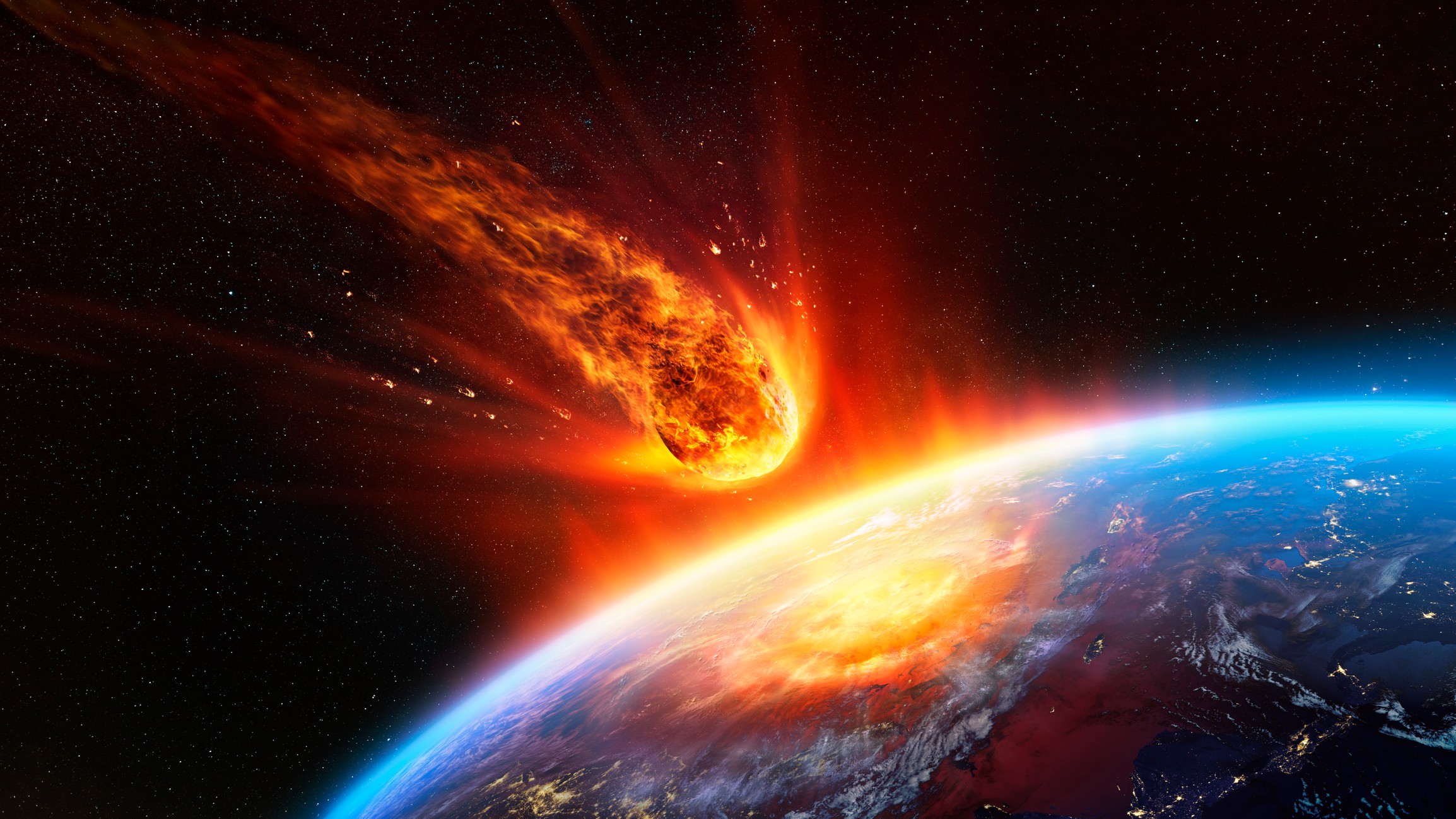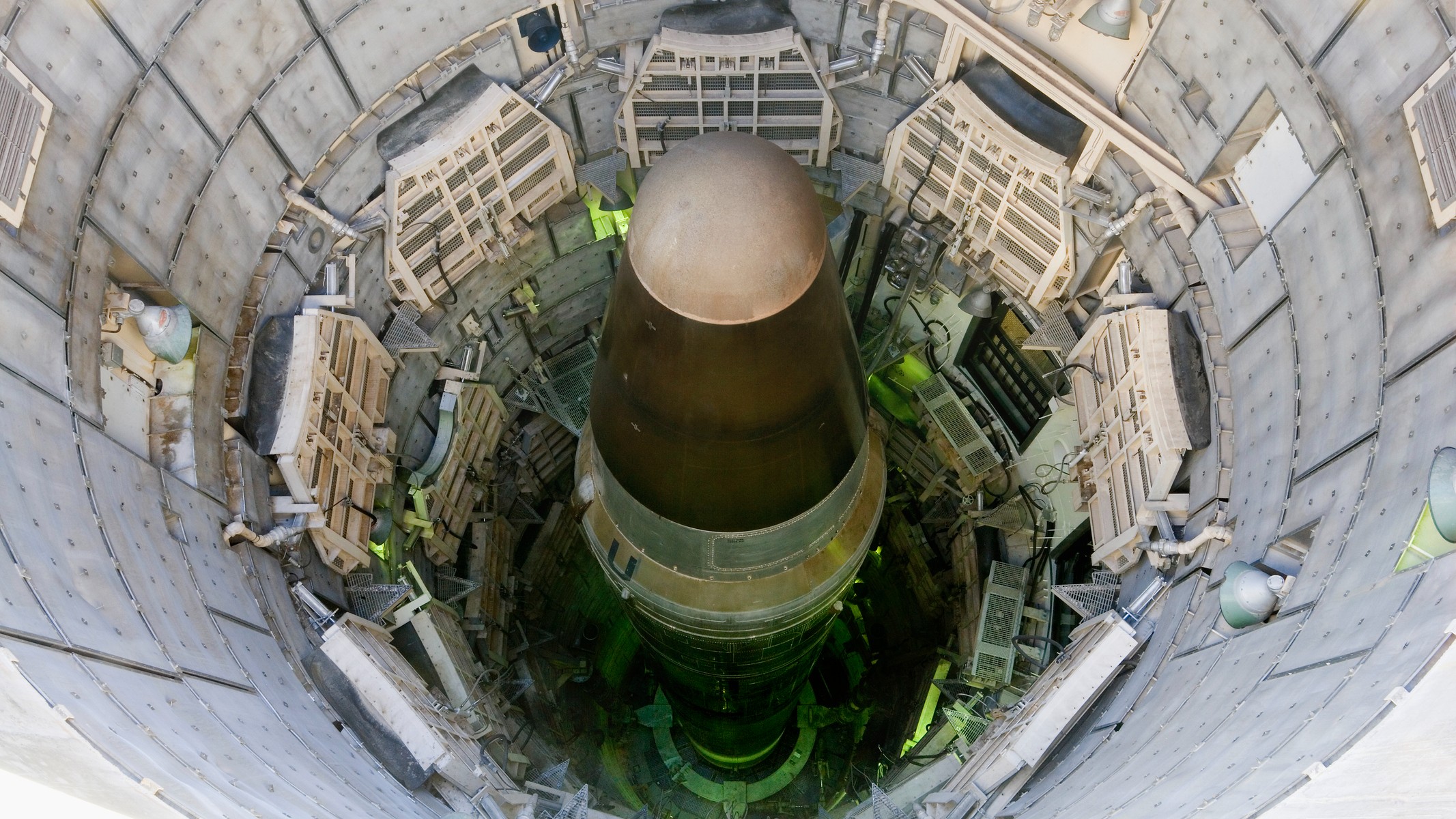
It's a classic science fiction scenario: An enormous asteroid is discovered hurtling toward Earth that is sure to trigger a cataclysmic extinction upon impact. Intrepid scientists have only a year to launch a preemptive strike against the space rock — to knock it off course or blow it to bits — with the fate of humankind at stake. Can they stop it?
This doomsday scenario is, in all likelihood, one humans alive today will never have to face. Astronomers have mapped the trajectories of more than 33,000 asteroids that make occasional close approaches to Earth, and none pose any risk of impact for at least the next 100 years.
Still, scientists understand that disaster can descend with little warning; thousands of asteroids move hidden in the sun's glare, including many rocks large enough to obliterate entire cities, and the European Space Agency (ESA) warns that dozens of "planet killer" asteroids — those measuring wider than 0.6 mile (1 kilometer) and capable of triggering a global extinction event — still lurk undiscovered in our solar system.
For this reason, space agencies take the doomsday scenario "very seriously," Brent Barbee, an aerospace engineer at NASA's Goddard Spaceflight Center and a professor of aerospace engineering at the University of Maryland, told Live Science. And after years of research — including the world's first mission to deflect an actual asteroid in space — the international community's efforts have yielded two viable ways of changing a potentially deadly asteroid's course: hitting it with a high-speed impactor, or pummeling it with nuclear explosives.
Related: NASA's most wanted: The 5 most dangerous asteroids in the solar system
The kinetic impactor method

Currently, the only proven way to deflect an asteroid is the kinetic impactor method — essentially, a very, very high-stakes game of cosmic pool.
"The kinetic impactor is a spacecraft that basically just rams into the asteroid at high speed and transfers its momentum to the asteroid, much like playing billiards," Barbee said. "But then the ejected material that comes off the asteroid from the impact point can provide additional momentum change for the asteroid and push it a little bit harder."
NASA tested the kinetic impactor method with the recent Double Asteroid Redirection Test (DART) — a $325 million mission that intentionally crashed a speeding spaceship into the 580-foot-wide (177 meters) asteroid Dimorphos in Sept. 2022.
Dimorphos posed no threat to Earth but made a prime target due to its size and orbit around a larger companion asteroid, Didymos. Following the successful impact on Sept. 26, Dimorphos' orbit around Didymos slowed by a whopping 33 minutes — a result of both the impact and the massive plume of dust ejected from the asteroid's surface. The mission — humanity's first and so far only attempt to alter the course of an asteroid — was a smashing success.

However, the kinetic impactor method has its drawbacks, Barbee said. Particularly, the bigger the target asteroid is, the more kinetic impactors are required to deflect it.
For example, to deflect an asteroid measuring roughly 2,000 feet (610 m) wide — or about three times the size of Dimorphos — scientists would need to simultaneously launch between 39 and 85 Falcon Heavy rockets carrying kinetic impactors, Barbee said, citing the results of a mock asteroid deflection exercise conducted at the International Academy of Astronautics Planetary Defense Conference this year. To deflect an asteroid measuring 4,900 feet (1.5 km) wide — a true "planet killer" — we'd need to simultaneously launch anywhere from 565 to 1,266 kinetic impactors, depending on which part of Earth the asteroid was poised to strike. (A glancing blow takes less mass to deflect than a dead-center hit).
"Either way, those numbers are completely impractical," Barbee said.
The nuclear option

The current "best option" for deflecting a large asteroid is to launch a nuke at it, Barbee said.
"A single appropriately sized nuclear explosive device was, in our analysis, found to be capable of deflecting even the 1.5 kilometer size asteroid," he added.
Logistically, the process would begin like a routine interplanetary mission, with a nuclear weapon mounted securely atop a standard launch vehicle, then delivered to the asteroid on a small spacecraft. From there, the weapon could be detonated near the asteroid during a high-speed flyby — or, ideally, the nuke-carrying spacecraft could rendezvous with the target asteroid, orbiting it for months or even years to find the perfect angle of approach, much like NASA's OSIRIS-REx spacecraft did with asteroid Bennu from Dec. 2018 to Oct. 2020. The ideal spot for a nuclear detonation would be within a few hundred feet of the asteroid, Barbee said.
Then, the explosion — a blast that would look nothing like any nuclear bomb ever detonated on Earth.
"Space, of course, is a vacuum… so you don't get a big pressure wave, or any of the thermal effects of a terrestrial detonation," Barbee said. "You get a whole lot of radiation all at once."
This torrent of radiation would penetrate and vaporize a thin outer layer of the asteroid's surface. Then, like a kinetic impactor on steroids, the vaporized material would shoot off the asteroid, giving the rock a powerful shove away from the explosion. If positioned correctly, the explosion would knock the planet-killer off its collision course with Earth.
This method could be equally effective at disrupting smaller "city killer" asteroids, too — those measuring at least 165 feet (50 m) in diameter, which is generally considered the minimum size for an asteroid to reach Earth's surface, Barbee said. While a kinetic impact against such a rock runs the risk of fragmenting it, forming chunks of unknown sizes moving in unpredictable ways, a well-placed nuke could simply "blow the asteroid to smithereens," solving the problem at once, Barbee added.
However, for now the "nuke it" method exists only in simulations based on data from terrestrial explosions. Many factors, including the size and composition of the asteroid, and the timeframe and trajectory of its approach to Earth, would ultimately impact such a mission's success.
Timing is everything

The biggest challenge with both methods is timing. In their Planetary Defense Conference exercises, astronomers were given 15 years' warning before the hypothetical asteroid's impact with Earth. This gave them ample time to plan, launch and rendezvous a spacecraft with the asteroid.
If a real planet-killer was discovered just a year or two before impact, things would get dicey.
"The typical interplanetary mission development timeline is about five years," Barbee said. "The way things stand right now, getting something off the ground in a year would be very difficult. I don't want to say outright that it would be impossible, but it would certainly be a big challenge."
That's why the best planetary defense is detecting asteroids early — charting them, monitoring them, and developing a contingency plan of attack. Many ground-based observatories are already on the case, with several space-based missions — including NASA's NEO Surveyor and ESA's NEOMIR satellites — in the works to join them. Hopefully, together, these eyes on the skies will keep scientists well informed about any killers lurking in the cosmic fog.
"Asteroid impacts are one of the few natural disasters that we actually have the means to both foresee and prevent," Barbee said. "And so we're taking advantage of that fact and trying to become as prepared as possible."






